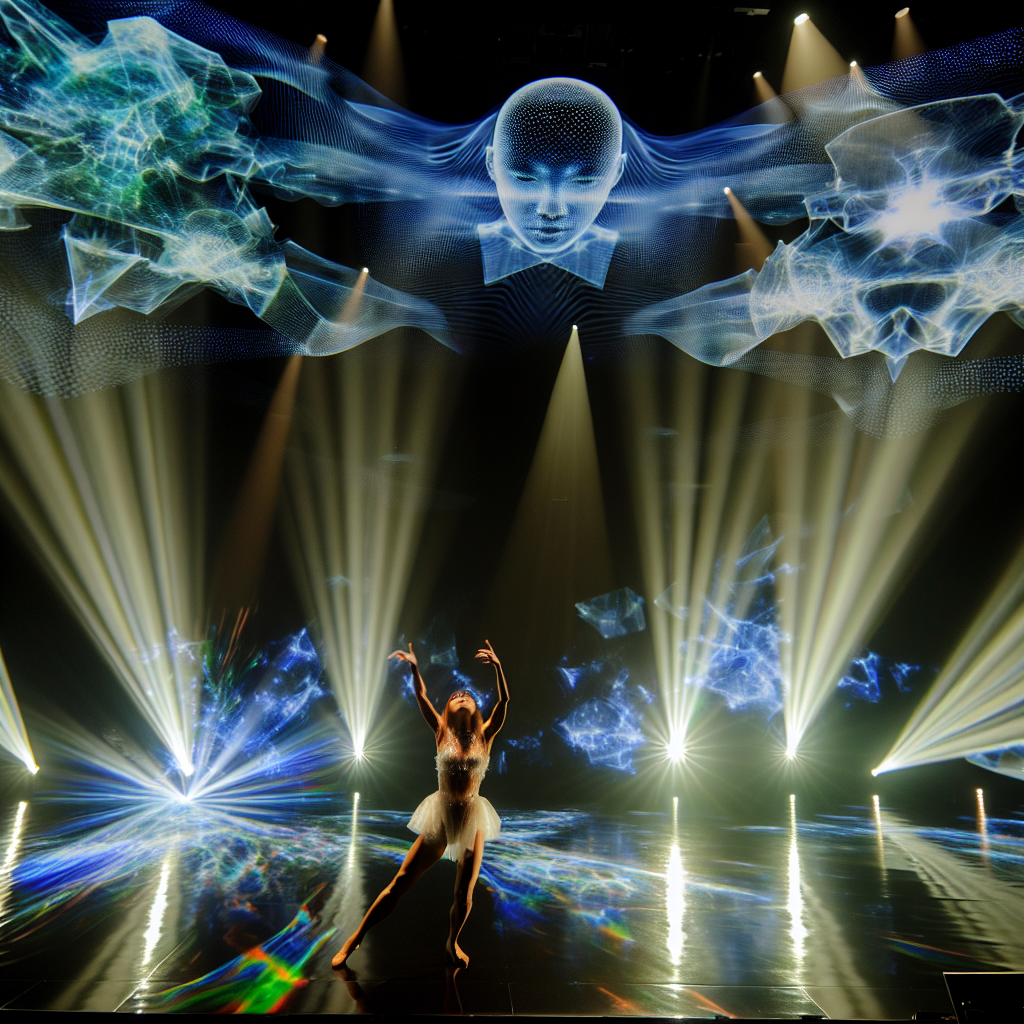Introduction
Did you know that the VR gaming market is projected to reach $92.31 billion by 2027?
This explosive growth highlights the increasing importance of virtual reality in the gaming world.
Gamers worldwide are embracing this technology, experiencing new levels of immersion and excitement.
Brief Overview:
Virtual reality is transforming the way we play games.
It provides immersive experiences that traditional gaming platforms cannot match.
VR places players directly into the game environment, allowing them to interact with the virtual world in unprecedented ways.
This technology goes beyond mere entertainment, offering educational and training applications as well.
Purpose of the Article:
This article explores the future of immersive gaming through the lens of virtual reality.
You will learn about:
- The Evolution of VR Gaming: Understand how VR technology has developed over the years.
- Core Components of VR Gaming: Discover the hardware and software that make VR gaming possible.
- Benefits of VR Gaming: Learn why VR gaming is captivating the imagination of players.
- Challenges and Limitations: Explore the hurdles VR gaming must overcome to reach its full potential.
- Future Trends and Innovations: Get insights into the exciting advancements on the horizon.
- Impact on the Gaming Industry: See how VR is shaping the future of game design and development.
As you read, you will gain a comprehensive understanding of VR’s role in the gaming industry.
This knowledge will equip you to appreciate the technological marvels behind VR games.
You will also understand the challenges and innovations that are driving this industry forward.
Virtual reality is not just a passing trend; it is a glimpse into the future of gaming.
Prepare to embark on a journey through the fascinating world of VR, where the lines between reality and fantasy blur.
By the end of this article, you will see how VR is revolutionizing gaming and pushing the boundaries of what we thought possible.
Section 1: Evolution of Gaming and Immersive Technologies
History of Gaming
Gaming has evolved significantly over the years.
Early games, such as Pong and Space Invaders, used simple 2D graphics.
These games provided basic interactions but captivated players with their engaging gameplay.
In the 1980s and 1990s, 2D games dominated the market, featuring iconic titles like Super Mario Bros. and The Legend of Zelda.
The 1990s saw the emergence of 3D graphics, revolutionizing gaming.
Games like Doom and Quake introduced players to immersive, three-dimensional worlds.
These games offered more realistic environments and complex gameplay mechanics.
The transition from 2D to 3D marked a significant milestone in the gaming industry.
Introduction of Immersive Technologies
The late 2000s and early 2010s brought a new wave of immersive technologies.
Augmented reality (AR) and virtual reality (VR) emerged, promising to change the gaming landscape.
AR overlays digital information onto the real world, enhancing the player’s surroundings.
Pokémon Go, released in 2016, popularized AR gaming, allowing players to catch virtual creatures in real-world locations.
Virtual reality takes immersion a step further by placing players directly into a digital world.
VR headsets like the Oculus Rift and HTC Vive made this possible.
Players could explore and interact with fully immersive environments, providing a new level of engagement.
Current State of VR in Gaming
Today, VR gaming continues to evolve, reaching new heights.
Key milestones have shaped the current state of VR gaming:
- Oculus Rift Release (2016): The Oculus Rift set the standard for modern VR headsets.
- PlayStation VR (2016): Sony brought VR to console gaming, expanding the market.
- Standalone VR Headsets: Devices like the Oculus Quest offer untethered VR experiences.
Current trends in VR gaming include:
- Enhanced Graphics and Performance: Developers focus on improving visual fidelity and reducing latency.
- Social VR Experiences: Games like VRChat and Rec Room allow players to socialize in virtual spaces.
- Haptic Feedback: New controllers provide tactile sensations, enhancing immersion.
- Fitness and Health Applications: Games like Beat Saber and Supernatural combine gaming with exercise.
VR gaming has gained popularity among mainstream audiences.
Affordable headsets and diverse game libraries contribute to this growth.
Major gaming companies invest heavily in VR, driving innovation and competition.
We Design & Develop Websites, Android & iOS Apps
Looking to transform your digital presence? We specialize in creating stunning websites and powerful mobile apps for Android and iOS. Let us bring your vision to life with innovative, tailored solutions!
Get Started TodayThe Future of Immersive Technologies
The future holds exciting possibilities for immersive gaming technologies.
Advancements in hardware and software will continue to push the boundaries of what is possible.
Here are some anticipated developments:
- Improved VR Headsets: Future headsets will offer higher resolution, wider fields of view, and better ergonomics.
- Mixed Reality (MR): Combining AR and VR, MR will create seamless transitions between real and virtual worlds.
- Neuro-Interfacing: Technologies that connect directly to the brain could enable mind-controlled gaming experiences.
- Expanded Game Genres: VR will influence genres like simulation, horror, and storytelling, creating new experiences.
The evolution of gaming and immersive technologies paints a bright future for the industry.
As VR continues to mature, it will redefine how we play and interact with games.
The journey from simple 2D games to fully immersive VR experiences showcases the relentless innovation in gaming.
The future of VR in gaming is not just a possibility; it is an inevitable reality that promises to transform the industry forever.

Section 2: Core Components of VR Gaming
Hardware Innovations
VR gaming relies heavily on advanced hardware to deliver immersive experiences.
Also, VR headsets, motion controllers, and other peripherals play crucial roles.
VR Headsets:
- Oculus Quest 2: This standalone headset offers high-quality visuals without needing a PC or console.
- HTC Vive Pro: Known for its high resolution and robust tracking, it provides a premium VR experience.
- PlayStation VR: It brings VR to console gamers, offering a wide range of exclusive titles.
Motion Controllers:
- Oculus Touch Controllers: These controllers offer intuitive hand tracking and precise control in virtual environments.
- Valve Index Controllers: Known as “knuckles controllers,” they track individual finger movements, enhancing interaction.
- PlayStation Move Controllers: They provide accurate motion tracking for PlayStation VR, enhancing gameplay.
Other Peripherals:
- VR Gloves: Devices like the Manus VR gloves allow for detailed hand and finger tracking.
- Treadmills: Omni-directional treadmills like the Virtuix Omni enable natural movement in VR spaces.
- Haptic Suits: Suits like the Teslasuit provide full-body haptic feedback, increasing immersion.
Software Developments
Advancements in software are essential for creating realistic and engaging VR experiences.
Game engines and graphics play pivotal roles in this process.
VR Game Engines:
- Unreal Engine: Known for its high-quality graphics, it powers many AAA VR games.
- Unity: This versatile engine is popular for VR development due to its flexibility and user-friendly interface.
- CryEngine: It offers stunning visuals and advanced physics, enhancing VR experiences.
Graphics and Performance:
- Real-Time Ray Tracing: This technology creates realistic lighting and shadows in VR environments.
- Optimized Rendering Techniques: Techniques like foveated rendering focus resources on what the player is looking at, improving performance.
- High-Resolution Textures: Detailed textures enhance the visual fidelity of VR games, making environments more immersive.
Sensory Enhancements
Sensory enhancements elevate the VR experience by engaging multiple senses.
Technologies like haptic feedback, spatial audio, and eye-tracking are crucial.
Haptic Feedback:
- Haptic Controllers: Devices like the Oculus Touch provide tactile feedback, making virtual objects feel real.
- Haptic Suits: Full-body suits deliver sensations to different parts of the body, increasing immersion.
- Haptic Accessories: Devices like the SenseGlove offer force feedback, simulating the feel of virtual objects.
Spatial Audio:
- 3D Audio Engines: Technologies like Dolby Atmos create immersive soundscapes, making audio feel three-dimensional.
- Directional Sound: This technology ensures that sounds come from the correct direction in the virtual environment.
- Ambient Soundscapes: Background sounds enhance the realism of VR worlds, making them feel alive.
Eye-Tracking:
- Foveated Rendering: This technique uses eye-tracking to render only where the player is looking, enhancing performance.
- Gaze Interaction: Players can interact with the environment using their gaze, adding a new layer of immersion.
- Emotional Detection: Eye-tracking can analyze player emotions, allowing for adaptive gameplay experiences.
The core components of VR gaming—hardware, software, and sensory enhancements—work together to create immersive experiences.
Hardware innovations like VR headsets and motion controllers provide the foundation.
Software developments in game engines and graphics bring virtual worlds to life.
Sensory enhancements engage multiple senses, making the experience feel real.
Together, these elements push the boundaries of what is possible in VR gaming.
As technology continues to advance, the future of VR gaming looks incredibly promising.
Section 3: Benefits of VR in Gaming
Immersion and Presence
VR creates an unparalleled sense of immersion and presence.
Players feel like they are inside the game world.
VR headsets block out the physical world, fully immersing the player in the virtual environment.
This immersion is further enhanced by the 360-degree view provided by VR.
Players can look around and see the game world in all directions, just like in real life.
Key Features of Immersion in VR:
- Head Tracking: The headset tracks the player’s head movements, adjusting the view accordingly.
- Realistic Environments: Detailed graphics and environments make the virtual world feel more authentic.
- Interactive Objects: Players can interact with virtual objects using motion controllers, enhancing the sense of presence.
Enhanced Gameplay Mechanics
VR introduces unique gameplay mechanics that traditional gaming cannot match.
These mechanics make gameplay more engaging and interactive.
Examples of Enhanced Gameplay Mechanics in VR:
- Motion Controls: Players use their hands to interact with the game, providing a more tactile experience.
- Example: In “Half-Life: Alyx,” players physically pick up and manipulate objects.
- Example: In “Half-Life: Alyx,” players physically pick up and manipulate objects.
- Body Movement: VR games require physical movement, making gameplay more active and immersive.
- Example: “Beat Saber” involves slicing blocks with lightsabers to the rhythm of the music.
- Example: “Beat Saber” involves slicing blocks with lightsabers to the rhythm of the music.
- Spatial Awareness: Players must be aware of their surroundings, adding a new layer of strategy.
- Example: In “Superhot VR,” players dodge bullets in slow motion, requiring precise movements.
Benefits of Enhanced Gameplay Mechanics:
- Increased Engagement: Interactive mechanics keep players more engaged in the game.
- Physical Activity: VR encourages physical movement, promoting a healthier gaming experience.
- Realistic Interactions: Players interact with the game world in a natural and intuitive way.
Social Interaction
VR has significant potential for social gaming and multiplayer experiences.
It allows players to connect and interact in virtual spaces.
Ways VR Enhances Social Interaction:
- Virtual Avatars: Players can customize avatars to represent themselves in the virtual world.
- Voice Chat: Built-in microphones and headphones enable real-time voice communication.
- Gestures and Expressions: VR can capture and replicate gestures, making interactions feel more natural.
Examples of Social VR Experiences:
- VRChat: Players explore virtual worlds, socialize, and participate in activities together.
- Rec Room: This game offers a variety of multiplayer games and social spaces for players to enjoy.
- AltspaceVR: A platform for social events, including virtual meetups, comedy shows, and live performances.
Benefits of Social Interaction in VR:
- Enhanced Connectivity: Players can connect with others worldwide, fostering a sense of community.
- Collaborative Gameplay: VR enables cooperative gameplay, where players work together to achieve common goals.
- Virtual Events: VR hosts virtual events, allowing players to attend from the comfort of their homes.
VR in gaming offers significant benefits, from unparalleled immersion and presence to unique gameplay mechanics and enhanced social interaction.
The ability to fully immerse players in the game world makes VR a transformative technology.
Enhanced gameplay mechanics create engaging, interactive experiences that traditional gaming cannot match.
Social interaction in VR connects players in new and meaningful ways, fostering community and collaboration.
As VR technology continues to advance, these benefits will only grow, solidifying VR’s role in the future of immersive gaming experiences.
Read: The Benefits and Risks of Virtual Gaming
Section 4: Challenges and Limitations
Technical Hurdles
VR gaming faces several technical hurdles that impede its progress.
We Design & Develop Websites, Android & iOS Apps
Looking to transform your digital presence? We specialize in creating stunning websites and powerful mobile apps for Android and iOS. Let us bring your vision to life with innovative, tailored solutions!
Get Started TodayMotion sickness remains a significant issue for many players.
Rapid movements and latency in VR can cause discomfort and nausea.
Developers constantly strive to reduce latency and improve frame rates to mitigate this problem.
However, motion sickness still affects the overall VR experience for some users.
Hardware Limitations:
- Processing Power: High-performance hardware is required to run VR games smoothly.
- Battery Life: Standalone VR headsets often suffer from short battery life.
- Comfort: VR headsets can be bulky and uncomfortable for extended use.
High Costs:
- Expensive Equipment: VR headsets and compatible hardware can be costly.
- Maintenance Costs: Keeping VR equipment in good condition can be expensive.
- Software Prices: High-quality VR games often come with a hefty price tag.
Content Development
Developers face numerous challenges when creating VR content.
The development process for VR games is more complex than traditional games.
Creating realistic and immersive environments requires significant resources and time.
Developers must also consider player comfort and usability, which adds another layer of complexity.
Challenges in VR Content Development:
- High Development Costs: Creating VR content is expensive and resource-intensive.
- Technical Expertise: Developers need specialized skills to create VR games.
- Testing and Iteration: Extensive testing is required to ensure smooth and comfortable gameplay.
Design Considerations:
- User Interface: Designing intuitive and accessible interfaces for VR is challenging.
- Interaction Mechanics: Developers must create natural and engaging interaction methods.
- Immersive Environments: Building detailed and realistic environments is crucial for immersion.
Performance Optimization:
- Frame Rates: Maintaining high frame rates is essential to prevent motion sickness.
- Latency Reduction: Reducing latency is crucial for a smooth VR experience.
- Resource Management: Efficient use of system resources is necessary to achieve optimal performance.
Market Adoption
Market adoption of VR gaming faces several obstacles.
Despite its potential, VR has not yet reached mainstream acceptance.
Several factors contribute to this slow adoption rate.
High costs deter many potential users from investing in VR equipment.
Additionally, the limited availability of high-quality VR content affects the market’s growth.
Factors Affecting Market Adoption:
- High Entry Costs: The initial investment in VR equipment is prohibitively expensive for many.
- Content Availability: A lack of compelling and diverse VR content hampers adoption.
- Awareness and Understanding: Many consumers are still unfamiliar with VR technology and its benefits.
Consumer Concerns:
- Health and Safety: Potential health issues, such as motion sickness, deter some users.
- Usability: Concerns about the comfort and ease of use of VR equipment.
- Longevity: Uncertainty about the longevity and future-proofing of VR technology.
Industry Efforts to Boost Adoption:
- Lowering Costs: Companies are working to make VR equipment more affordable.
- Expanding Content Libraries: Developers are creating more diverse and high-quality VR games.
- Increasing Awareness: Marketing and educational efforts aim to raise awareness and understanding of VR.
VR gaming faces significant challenges and limitations that hinder its widespread adoption.
Technical hurdles, such as motion sickness and hardware limitations, affect the user experience.
Content development for VR is complex and resource-intensive, requiring specialized skills and significant investment.
Market adoption is slow due to high costs, limited content availability, and consumer concerns.
Despite these challenges, the industry continues to innovate and strive for solutions.
As technology advances and these obstacles are addressed, VR gaming will likely become more accessible and appealing to a broader audience.
The future of immersive gaming experiences depends on overcoming these challenges and unlocking the full potential of virtual reality.
Read: Virtual Reality: What it is, does and will be
Section 5: Future Trends and Innovations
Advancements in Hardware
The future of VR gaming will see significant advancements in hardware.
VR headsets will become lighter and more comfortable.
Improved optics will provide higher resolution and wider fields of view.
These enhancements will make VR experiences more immersive and enjoyable.
Predicted Hardware Improvements:
- Higher Resolution: Future headsets will offer ultra-high-definition displays for sharper visuals.
- Enhanced Comfort: Innovations in design will reduce weight and improve ergonomics.
- Wireless Technology: Advances in wireless tech will eliminate the need for cables, enhancing mobility.
Accessories Innovations:
- Haptic Gloves: Future gloves will provide more precise and varied tactile feedback.
- Full-Body Tracking: Advanced sensors will enable full-body movement tracking for a more immersive experience.
- Improved Audio: Enhanced spatial audio systems will provide realistic soundscapes.
These hardware advancements will create more realistic and immersive VR experiences, attracting more gamers to the technology.
Integration with Other Technologies
VR will increasingly integrate with other cutting-edge technologies.
Artificial intelligence (AI) will enhance NPC behavior and game environments.
Augmented reality (AR) will merge the physical and virtual worlds.
Cloud gaming will provide access to high-quality VR experiences without the need for powerful hardware.
Potential Convergences:
- VR and AI: AI will enable smarter, more responsive game characters and dynamic environments.
- VR and AR: Combining VR and AR will create mixed reality experiences that blend real and virtual worlds.
- VR and Cloud Gaming: Cloud gaming will allow users to stream VR games, reducing the need for expensive hardware.
Benefits of Integration:
- Enhanced Realism: AI-driven environments and characters will make VR worlds more believable.
- New Experiences: Mixed reality will offer unique experiences, such as virtual overlays on real-world objects.
- Accessibility: Cloud gaming will make VR more accessible by lowering hardware requirements.
These integrations will expand the possibilities of VR gaming, providing richer and more varied experiences.
New Gaming Experiences
Future VR will enable entirely new types of games and experiences.
Enhanced hardware and integration with other technologies will push the boundaries of what is possible.
Speculated New Experiences:
- Virtual Worlds: Players will explore expansive, detailed virtual worlds with no physical constraints.
- Social VR: Social interactions will become more realistic and engaging, with virtual meetups and shared experiences.
- Educational VR: VR will be used for immersive learning experiences, such as virtual field trips and interactive lessons.
Examples of Future Games:
- Fully Immersive RPGs: Players will experience role-playing games with lifelike NPCs and dynamic storylines.
- Collaborative Puzzle Games: Teams will solve complex puzzles together in fully interactive environments.
- Virtual Sports: Realistic sports simulations will allow players to compete in virtual arenas.
Benefits of New Experiences:
- Increased Engagement: Innovative gameplay will keep players more engaged and invested.
- Broader Appeal: Diverse experiences will attract a wider range of players.
- Educational Value: Learning through VR will make education more interactive and effective.
These new gaming experiences will revolutionize the industry, offering players unprecedented levels of immersion and interaction.
The future of VR gaming looks incredibly promising with advancements in hardware, integration with other technologies, and new gaming experiences.
We Design & Develop Websites, Android & iOS Apps
Looking to transform your digital presence? We specialize in creating stunning websites and powerful mobile apps for Android and iOS. Let us bring your vision to life with innovative, tailored solutions!
Get Started TodayFuture VR headsets will be more comfortable, wireless, and provide stunning visuals.
Integration with AI, AR, and cloud gaming will enhance realism and accessibility.
New types of games and experiences will keep players engaged and broaden the appeal of VR.
These trends and innovations will shape the future of immersive gaming, making VR an integral part of the gaming landscape.
The journey ahead promises exciting developments that will redefine the possibilities of virtual reality in gaming.
Read: Apps for Music Lovers: Top 10 Must-Haves in 2024

Section 6: Impact on the Gaming Industry
Shift in Game Design
VR is fundamentally changing game design.
Developers are rethinking traditional mechanics to fit the immersive nature of VR.
VR games require intuitive controls and interactions, leading to innovative design solutions.
Designers must consider spatial awareness and physical movements, which adds complexity to game development.
Influences on Game Design:
- Interaction Mechanics: VR necessitates realistic and natural interaction methods.
- Environmental Design: Developers create highly detailed and immersive environments.
- User Interface (UI): VR requires minimalistic and intuitive UI elements to avoid clutter.
Examples of Design Changes:
- First-Person Perspective: Most VR games adopt a first-person view to enhance immersion.
- Interactive Objects: Players can pick up, move, and manipulate objects naturally.
- Movement Systems: Games use teleportation or smooth locomotion to mitigate motion sickness.
These design shifts make VR games more immersive and engaging, providing players with unique experiences.
Economic Impact
VR’s rise has significant financial implications for developers and the gaming industry.
Developing VR games is expensive due to high production costs and the need for specialized skills.
However, the potential returns are substantial as VR becomes more popular.
Financial Considerations:
- High Development Costs: VR games require more resources and time to create.
- Investment in Hardware: Developers need access to VR hardware for testing and development.
- Market Potential: The growing VR market offers lucrative opportunities for successful games.
Revenue Streams:
- Game Sales: High-quality VR games can command premium prices.
- Subscription Services: Some developers offer VR experiences through subscription models.
- In-Game Purchases: Microtransactions and downloadable content (DLC) provide additional revenue.
Economic Benefits:
- Job Creation: The VR industry creates jobs for developers, designers, and hardware engineers.
- Market Growth: VR’s popularity drives growth in the gaming industry.
- Investment Opportunities: Investors are increasingly interested in VR startups and projects.
The economic impact of VR is profound, with significant investments driving innovation and market expansion.
Community and Ecosystem
VR gaming communities and ecosystems are growing rapidly.
Players form communities around shared VR experiences, fostering social interaction and collaboration.
These communities enhance the overall VR experience, creating a sense of belonging among players.
Growth of VR Communities:
- Online Forums: Players discuss VR experiences and share tips on platforms like Reddit and Discord.
- Social VR Platforms: Games like VRChat and Rec Room facilitate social interaction in virtual spaces.
- VR Events: Virtual reality conventions and meetups allow enthusiasts to connect and share experiences.
Ecosystem Development:
- Content Creators: VR streamers and YouTubers create content that promotes VR gaming.
- Developers and Studios: Indie and AAA developers contribute to a diverse VR game library.
- Hardware Manufacturers: Companies like Oculus, HTC, and Sony drive hardware innovation.
Benefits of a Robust Ecosystem:
- Increased Engagement: A strong community keeps players engaged and invested in VR.
- Collaborative Development: Developers can gather feedback and collaborate with players.
- Market Expansion: A vibrant ecosystem attracts new players and investors.
The growing VR community and ecosystem support the technology’s development and adoption, enhancing the overall gaming experience.
VR is making a significant impact on the gaming industry by influencing game design, driving economic growth, and fostering strong communities.
Developers must innovate and adapt to create immersive VR experiences.
The financial implications are substantial, with high development costs balanced by lucrative market potential.
VR communities and ecosystems provide support and engagement, driving the technology’s growth.
As VR continues to evolve, its influence on the gaming industry will only deepen, reshaping the future of interactive entertainment.
The journey ahead promises exciting developments and opportunities for both players and developers.
Read: How AI is Revolutionizing the Film Industry in 2024
Conclusion
Recap of Key Points
Virtual reality (VR) is revolutionizing the gaming industry.
We explored the evolution of gaming from 2D to immersive 3D experiences.
We discussed how VR hardware, like headsets and motion controllers, is advancing rapidly.
Developers face challenges in creating VR content but continue to innovate.
VR offers unique gameplay mechanics and social interactions that traditional games cannot match.
Despite technical and financial hurdles, the future of VR gaming looks promising.
The industry is growing, with expanding communities and ecosystems supporting its development.
Key Points Recap:
- Evolution of Gaming: VR is the next step in gaming’s evolution, offering unparalleled immersion.
- Hardware Advancements: Future VR headsets will be more comfortable, wireless, and visually stunning.
- Content Development Challenges: High development costs and technical expertise are required for VR content creation.
- Unique Gameplay Mechanics: VR introduces interactive and engaging gameplay elements.
- Social Interaction: VR enhances social gaming experiences and fosters community growth.
- Economic Impact: VR drives job creation, market growth, and investment opportunities.
- Community and Ecosystem Growth: Strong VR communities and ecosystems support technology’s adoption and development.
Future Outlook
The future of VR in gaming is incredibly bright.
Advancements in hardware and software will continue to push the boundaries of what is possible.
We Design & Develop Websites, Android & iOS Apps
Looking to transform your digital presence? We specialize in creating stunning websites and powerful mobile apps for Android and iOS. Let us bring your vision to life with innovative, tailored solutions!
Get Started TodayDevelopers will create even more immersive and interactive experiences.
Integration with other technologies, such as AI and AR, will further enhance VR’s capabilities.
As costs decrease and technology improves, VR will become more accessible to a broader audience.
The growing popularity of VR will drive more investment and innovation in the industry.
Positive Future Outlook:
- Continuous Innovation: Ongoing advancements in technology will enhance VR experiences.
- Broader Accessibility: Lower costs and improved technology will make VR more accessible.
- Increased Investment: Growing interest in VR will attract more investment and drive further innovation.
- Integration with Emerging Technologies: Combining VR with AI, AR, and cloud gaming will unlock new possibilities.
Call to Action
Stay informed about VR advancements and try VR gaming for yourself.
The world of VR is constantly evolving, offering new experiences and opportunities.
Follow industry news, join VR communities, and explore the latest VR games and hardware.
Support developers by trying out new VR titles and providing feedback.
Your participation can help shape the future of VR gaming.
Actions to Take:
- Stay Informed: Follow VR news and updates to keep up with the latest advancements.
- Join Communities: Engage with VR communities online to share experiences and learn from others.
- Explore VR Games: Try out different VR games to experience the technology firsthand.
- Support Developers: Provide feedback and support to VR developers by purchasing games and participating in betas.
Benefits of Engaging with VR:
- Experience Immersion: Discover the unique and immersive experiences that VR offers.
- Be Part of the Future: Contribute to the growth and development of VR technology.
- Enhance Social Interactions: Connect with other VR enthusiasts and participate in virtual events.
Virtual reality is reshaping the gaming industry, offering unparalleled immersive experiences.
The future holds exciting developments in hardware, software, and community growth.
By staying informed and engaged, you can be part of this revolutionary journey.
Try VR gaming, support the industry, and help shape the future of immersive gaming experiences.
The role of VR in gaming is expanding, and your involvement can make a difference.
Additional Resources
For Further Reading:
- How VR and AR are Changing the Face of Entertainment and Beyond
- The Evolution of Game Controllers and Control Schemes and their Effect on Their Games
- The Rise of Virtual Reality: Redefining the Way We Experience the World
Before You Go…
Hey, thank you for reading this blog post to the end. I hope it was helpful. Let me tell you a little bit about Nicholas Idoko Technologies.
We help businesses and companies build an online presence by developing web, mobile, desktop, and blockchain applications.
We also help aspiring software developers and programmers learn the skills they need to have a successful career.
Take your first step to becoming a programming expert by joining our Learn To Code academy today!
Be sure to contact us if you need more information or have any questions! We are readily available.
Put Your Tech Company on the Map!
Get featured on Nicholas Idoko’s Blog for just $200. Showcase your business, boost credibility, and reach a growing audience eager for tech solutions.
Publish Now









